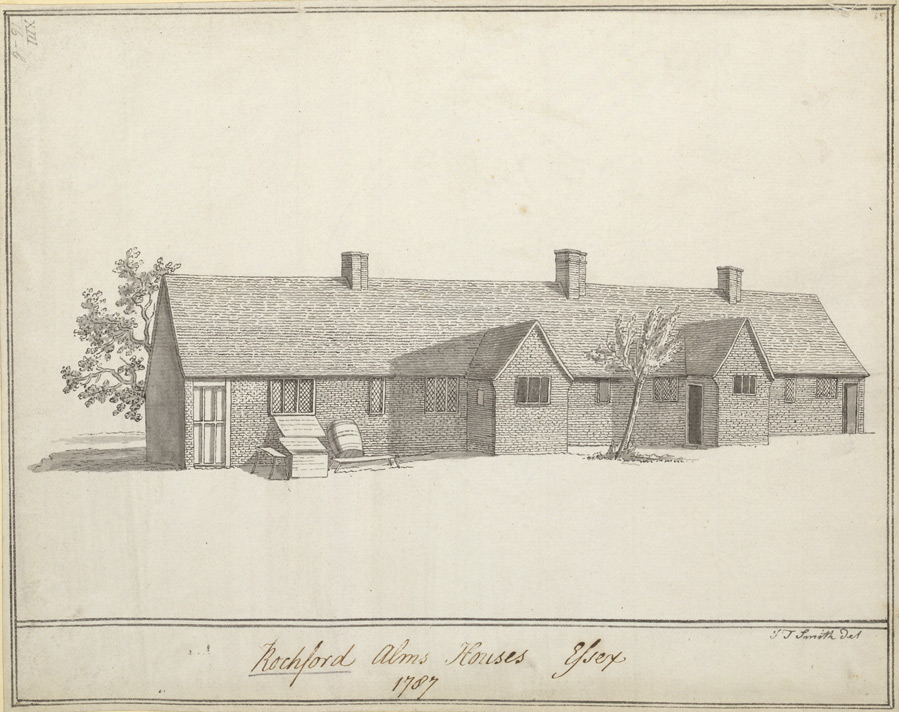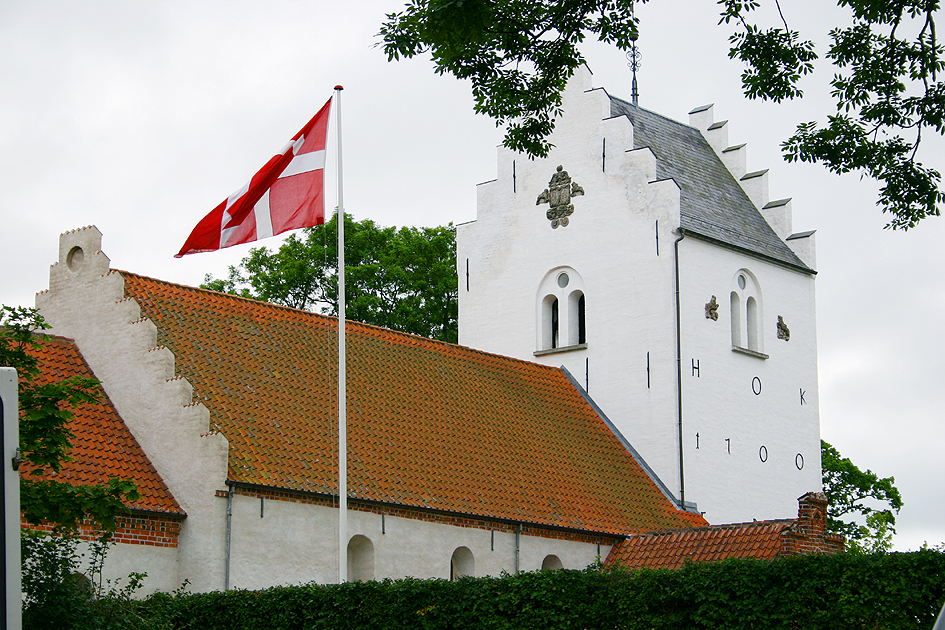|
Carmelite Priory, Helsingør
The Carmelite Priory, Helsingør, or Priory of Our Lady, Helsingør (), was a house of Carmelite friars in Helsingør, Zealand, Denmark, established in 1430. It is the finest example of a complete monastic complex surviving in Denmark, and one of the best in all of Scandinavia. History Carmelites The Priory of Our Lady was established in 1430 for a group of Carmelite friars from Landskrona. It was one of three religious houses founded in Helsingør by King Erik VII as it grew from a small fishing village to a trading port on Øresund, the strait which separates Zealand from Skåne (now in southern Sweden), an important fishing ground and busy shipping corridor between the North Sea and the Baltic. Erik VII, the heir of Margaret I, needed funds and his new toll on shipping was a source of steady income. He wanted to impress outsiders and set about purposefully to develop Helsingør as a gateway city. One of the things he did was to establish in the town not only the priory for ... [...More Info...] [...Related Items...] OR: [Wikipedia] [Google] [Baidu] |
Basilica
In Ancient Roman architecture, a basilica (Greek Basiliké) was a large public building with multiple functions that was typically built alongside the town's forum. The basilica was in the Latin West equivalent to a stoa in the Greek East. The building gave its name to the ''basilica'' architectural form. Originally, a basilica was an ancient Roman public building, where courts were held, as well as serving other official and public functions. Basilicas are typically rectangular buildings with a central nave flanked by two or more longitudinal aisles, with the roof at two levels, being higher in the centre over the nave to admit a clerestory and lower over the side-aisles. An apse at one end, or less frequently at both ends or on the side, usually contained the raised tribunal occupied by the Roman magistrates. The basilica was centrally located in every Roman town, usually adjacent to the forum and often opposite a temple in imperial-era forums. Basilicas were also ... [...More Info...] [...Related Items...] OR: [Wikipedia] [Google] [Baidu] |
Hanseatic League
The Hanseatic League was a Middle Ages, medieval commercial and defensive network of merchant guilds and market towns in Central Europe, Central and Northern Europe, Northern Europe. Growing from a few Northern Germany, North German towns in the late 12th century, the League expanded between the 13th and 15th centuries and ultimately encompassed nearly 200 settlements across eight modern-day countries, ranging from Tallinn in Estonia in the east, Bergen (Bjørgvin) in Norway to the North to the Netherlands in the west, and extended inland as far as Cologne, Prussia (region), the Prussian regions and Kraków, Poland. The League began as a collection of loosely associated groups of German traders and towns aiming to expand their commercial interests, including protection against robbery. Over time, these arrangements evolved into the League, offering traders toll privileges and protection on affiliated territory and trade routes. Economic interdependence and familial connections am ... [...More Info...] [...Related Items...] OR: [Wikipedia] [Google] [Baidu] |
Almshouse
An almshouse (also known as a bede-house, poorhouse, or hospital) is charitable housing provided to people in a particular community, especially during the Middle Ages. They were often built for the poor of a locality, for those who had held certain jobs, or their widows, and for elderly people who could no longer pay rent. They are generally maintained by a charity or the trustees of a bequest. " Alms" are, in the Christian tradition, money or services donated to support the poor and indigent. Almshouses were originally formed as extensions of the church system and were later adapted by local officials and authorities. History Many almshouses are European Christian institutions though some are secular. Almshouses provide subsidised accommodation, often integrated with social care resources such as wardens. England Almshouses were established from the 10th century in Britain, to provide a place of residence for poor, old, and distressed people. They were sometimes called b ... [...More Info...] [...Related Items...] OR: [Wikipedia] [Google] [Baidu] |
Grammar School
A grammar school is one of several different types of school in the history of education in the United Kingdom and other English-speaking countries, originally a Latin school, school teaching Latin, but more recently an academically oriented Selective school, selective secondary school. The original purpose of medieval grammar schools was the teaching of Latin. Over time the curriculum was broadened, first to include Ancient Greek, and later English and other languages of Europe, European languages, natural sciences, mathematics, history, geography, art and other subjects. In the late Victorian era grammar schools were reorganised to provide secondary education throughout England and Wales; Scotland had developed a different system. Grammar schools of these types were also established in British territories overseas, where they have evolved in different ways. Grammar schools became one of the three tiers of the Tripartite System of state-funded secondary education operating in ... [...More Info...] [...Related Items...] OR: [Wikipedia] [Google] [Baidu] |
Christian III Of Denmark
Christian III (12 August 1503 – 1 January 1559) reigned as King of Denmark from 1534 and King of Norway from 1537 until his death in 1559. During his reign, Christian formed close ties between the church and the crown. He established Lutheranism as the state religion within his realms as part of the Protestant Reformation, and was the first King of Denmark-Norway. Childhood Christian was the eldest son of the future king, Frederick I of Denmark, and Anna of Brandenburg. He was born at Gottorf Castle in Schleswig which Frederick I had made as a primary residence. In 1514, when he was just ten years old, Christian's mother died. Four years later, his father remarried to Sophie of Pomerania (1498–1568). In 1523, Frederick I was elected King of Denmark in the place of his nephew, Christian II. The young Prince Christian's first public service after his father became king was gaining the submission of Copenhagen, which stood firm for the fugitive, Christian II ... [...More Info...] [...Related Items...] OR: [Wikipedia] [Google] [Baidu] |
Skibby Chronicle
The ''Skibby Chronicle'' (, ) is a Danish chronicle written in Latin and dating from the 1530s. It is preserved in a manuscript now held at the Arnamagnæan Institute. The manuscript was found during 1650, walled in behind the altar of Skibby Church (). It was printed in Latin 1773 and translated into Danish in 1890–1891. History It was found in Skibby Church () in North Zealand, Denmark. It is anonymous but according to many historians, the author was the outstanding humanist Poul Helgesen (Latin: ). Formally the work covers the period 1047–1534, but the main part covers events during the reigns of King Christian II and King Frederick I. The work is a sometimes very personal description of Danish history during the last decades of Roman Catholicism, marked by the author's sympathy for and (mainly) antipathy against the political actors. Especially his portrait of Christian II is a very subjective one, affected by his negative attitude to the king's anti-aristocratic policy ... [...More Info...] [...Related Items...] OR: [Wikipedia] [Google] [Baidu] |
Skibby
Skibby is a town with a population of 3,135 (1 January 2025),BY3: Population 1. January by rural and urban areas, area and population density The Mobile Statbank from situated in , on the northern part of the island of |
Reformation In Denmark
The Reformation, also known as the Protestant Reformation or the European Reformation, was a time of major Theology, theological movement in Western Christianity in 16th-century Europe that posed a religious and political challenge to the papacy and the authority of the Catholic Church. Towards the end of the Renaissance, the Reformation marked the beginning of Protestantism. It is considered one of the events that signified the end of the Middle Ages and the beginning of the early modern period in Europe. The Reformation is usually dated from Martin Luther's publication of the ''Ninety-five Theses'' in 1517, which gave birth to Lutheranism. Prior to Martin Luther and other Protestant Reformers, there were Proto-Protestantism, earlier reform movements within Western Christianity. The end of the Reformation era is disputed among modern scholars. In general, the Reformers argued that justification (theology), justification was sola fide, based on faith in Jesus alone and n ... [...More Info...] [...Related Items...] OR: [Wikipedia] [Google] [Baidu] |
Lutheran
Lutheranism is a major branch of Protestantism that emerged under the work of Martin Luther, the 16th-century German friar and Protestant Reformers, reformer whose efforts to reform the theology and practices of the Catholic Church launched the Reformation in 1517. The Lutheran Churches adhere to the Bible and the Ecumenical Creeds, with Lutheran doctrine being explicated in the Book of Concord. Lutherans hold themselves to be in continuity with the apostolic church and affirm the writings of the Church Fathers and the first four ecumenical councils. The schism between Roman Catholicism and Lutheranism, which was formalized in the Diet of Worms, Edict of Worms of 1521, centered around two points: the proper source of s:Augsburg Confession#Article XXVIII: Of Ecclesiastical Power., authority in the church, often called the formal principle of the Reformation, and the doctrine of s:Augsburg Confession#Article IV: Of Justification., justification, the material principle of Luther ... [...More Info...] [...Related Items...] OR: [Wikipedia] [Google] [Baidu] |
Erasmus
Desiderius Erasmus Roterodamus ( ; ; 28 October c. 1466 – 12 July 1536), commonly known in English as Erasmus of Rotterdam or simply Erasmus, was a Dutch Christian humanist, Catholic priest and Catholic theology, theologian, educationalist, Menippean satire, satirist, and philosopher. Through his Works of Erasmus, works, he is considered one of the most influential thinkers of the Northern Renaissance and one of the major figures of Dutch and Western culture. Erasmus was an important figure in classical scholarship who wrote in a spontaneous, copious and natural Latin style. As a Catholic priest developing Philology, humanist techniques for working on texts, he prepared pioneering new Vulgate, Latin and Biblical Greek, Greek scholarly editions of the Novum Instrumentum omne, New Testament and of the Church Fathers, with annotations and commentary that were immediately and vitally influential in both the Protestant Reformation and the Catholic Reformation. He also wrote ''De ... [...More Info...] [...Related Items...] OR: [Wikipedia] [Google] [Baidu] |
Poul Helgesen
Poul Helgesen (also Paul Eliasen; Latin: ''Paulus Heliæ''; ca. 1485 – died after 1534) was a Danish Carmelite, a humanist and historian. Helgesen was a mendicant monk who at first supported Christian II and the Lutheran reform movement, but later broke with both and wrote warnings against the tyrannical king and the Lutheran preachers. Like his role model Erasmus of Rotterdam, Helgesen found himself in the gray area between Catholicism and Protestantism. Life Helgesen, the leading Danish example of Reform Catholicism (a minor Danish parallel of Erasmus of Rotterdam) came from Varberg in the province of Halland, now part of Sweden. He himself writes that his mother was of Swedish descent; otherwise nothing else is known about his family. Early on – apparently in his childhood – he joined the Carmelite Order in Varberg. The Carmelites placed great emphasis on Bible study and preaching, and Helgesen was one of the learned monks. At some point he received his ''baccalaureus' ... [...More Info...] [...Related Items...] OR: [Wikipedia] [Google] [Baidu] |








